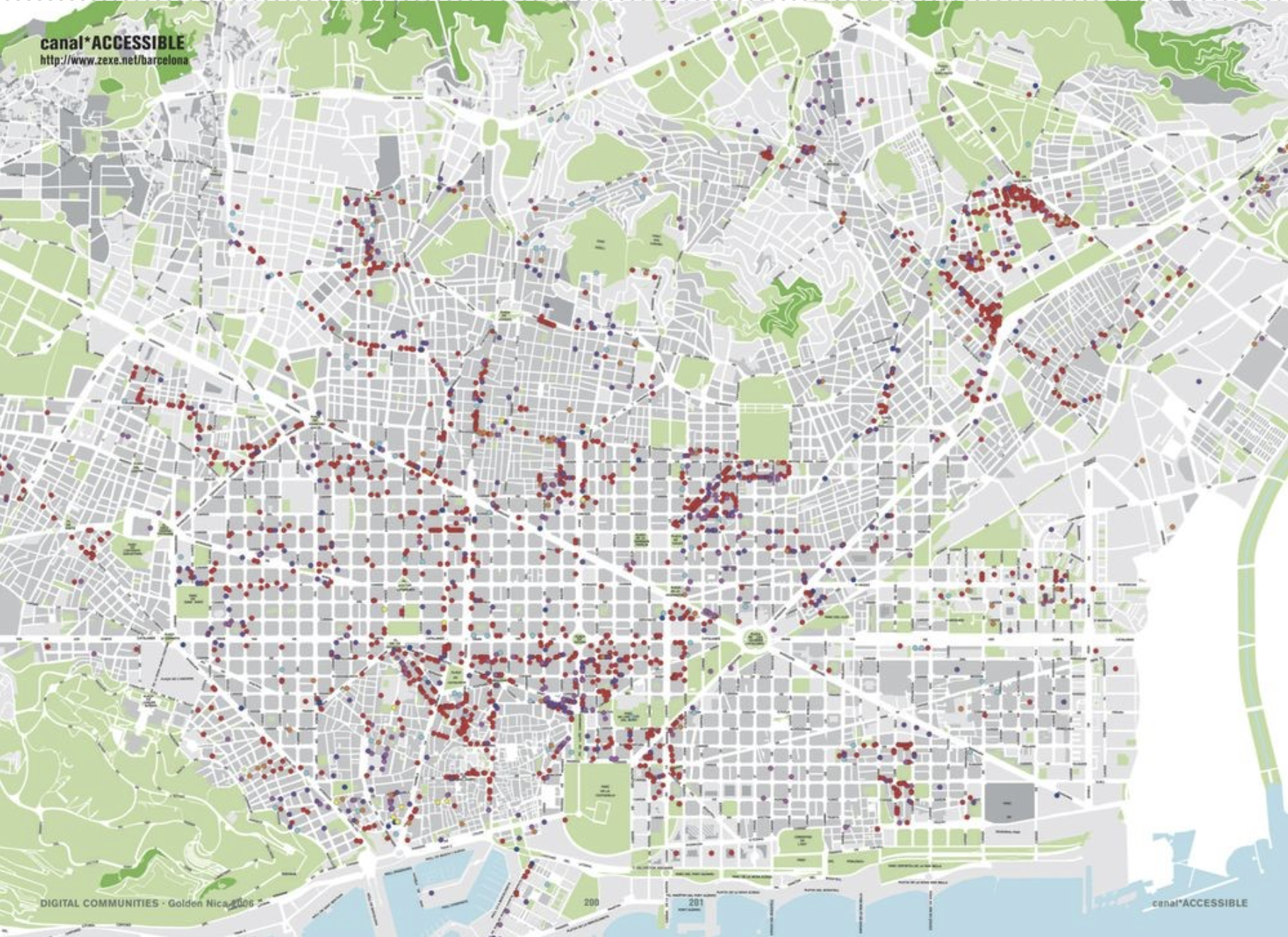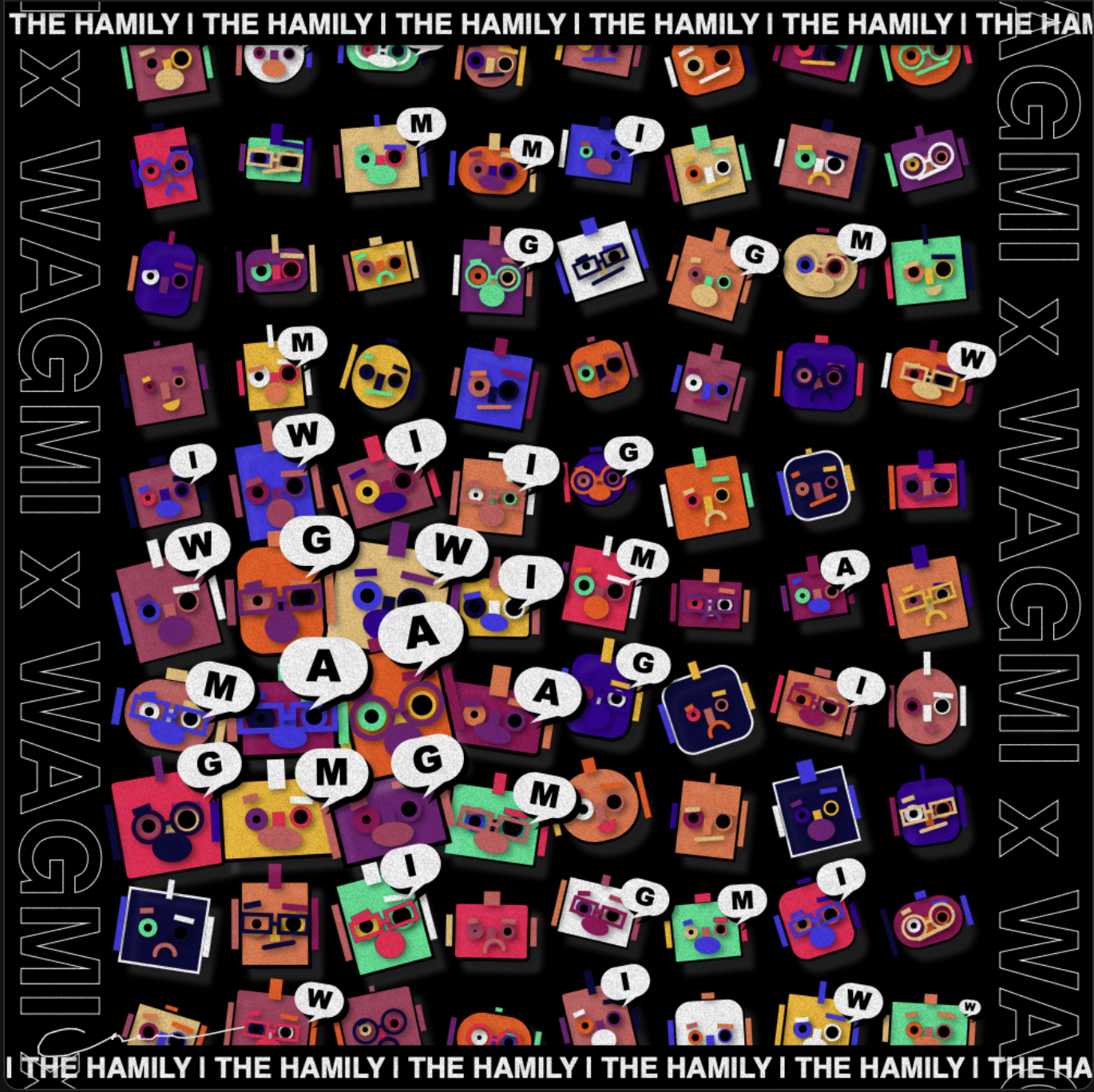Canal*Accesible Barcelona
The 2006 project Canal*Accessible by Antoni Abad allows people with disabilities to create an accessibility-friendly and unfriendly map of Barcelona. Using a virtual interactive map of the city, all people can upload obstacles they encounter in Barcelona every day. This multimedia message site gives a voice to people with disabilities and opens the world for them to have accessibility just that much more. Sample reports include architectural barriers, steps, stairs, curbs, public transportation, lavatories, and more. These “posts” are accompanied by commentary of the user and a picture of the geo-specific location of concern. It is noted that in the beginning, people belonging to these groups found it difficult to articulate their concerns and contents as they were not used to being accommodated for. Now they are given a voice in the city and awareness has been made for the physically handicapped population.
The project Canal*Accessible had to be constantly updated to specify the areas on the map where concerns were raised about accessibility. On a more positive note, Canal SI* was developed to report and provide uploaded information on positive, barrier free locations of accessibility. With the incorporation of mobile phones in everyday lives, Canal*Accessible was made to supplement this technological rise while simultaneously bringing awareness and voice for the disabled.
Canal*Accessible Logo and Posters from the original website.
The logo created does a spectacular job with the original handicapped design and giving character to the needs they have. The main logo is made of a handicapped sign/symbol and has the symbol holding a megaphone. A message is written along the wheel of the chair in the symbol “zexe.net” which arguably is the URL for information and possibly the website. Unfortunately, the website no longer is affiliated with the URL, however through using an internet archive, there is evidence of proper function with quirky individuals (local social outcasts) uploading reviews. In a major city such as Barcelona, this is an effective way to spread the word before the time of instantaneous sharing on social media. The other posters provide the same URL and provoke curiosity encouraging all people to participate. These posters do not have visibly handicapped looking subjects which is intriguing and drives home that it is everybody’s responsibility to assist the handicapped community. In today’s time, there are mentions and praises of handicap accessibility in map and review applications of Barcelona. Therefore, there has been an adaptation from this idea in 2006, and the awareness for disabilities has gone up.
How has society used technology to encourage capable and handicapped people to continue to voice areas of accessibility and areas that need to be changed? Through accessing the Canal*Accessible website, it was found that those who reported on the site were “people with disabilities, prostitutes, gypsies, and taxi drivers”. This group gives context to a pattern of social outcasts in Spain, and it can be assumed that these people groups might have been encouraged to look out for each other, as locals, especially the handicapped. Spain has had several laws protect the interest of disabled people starting with structural changes in the 1990s. In 1992, awareness for the disabled community was significantly raised when Barcelona hosted the Summer Paralympic Games in Barcelona and Madrid.
From the original website.







